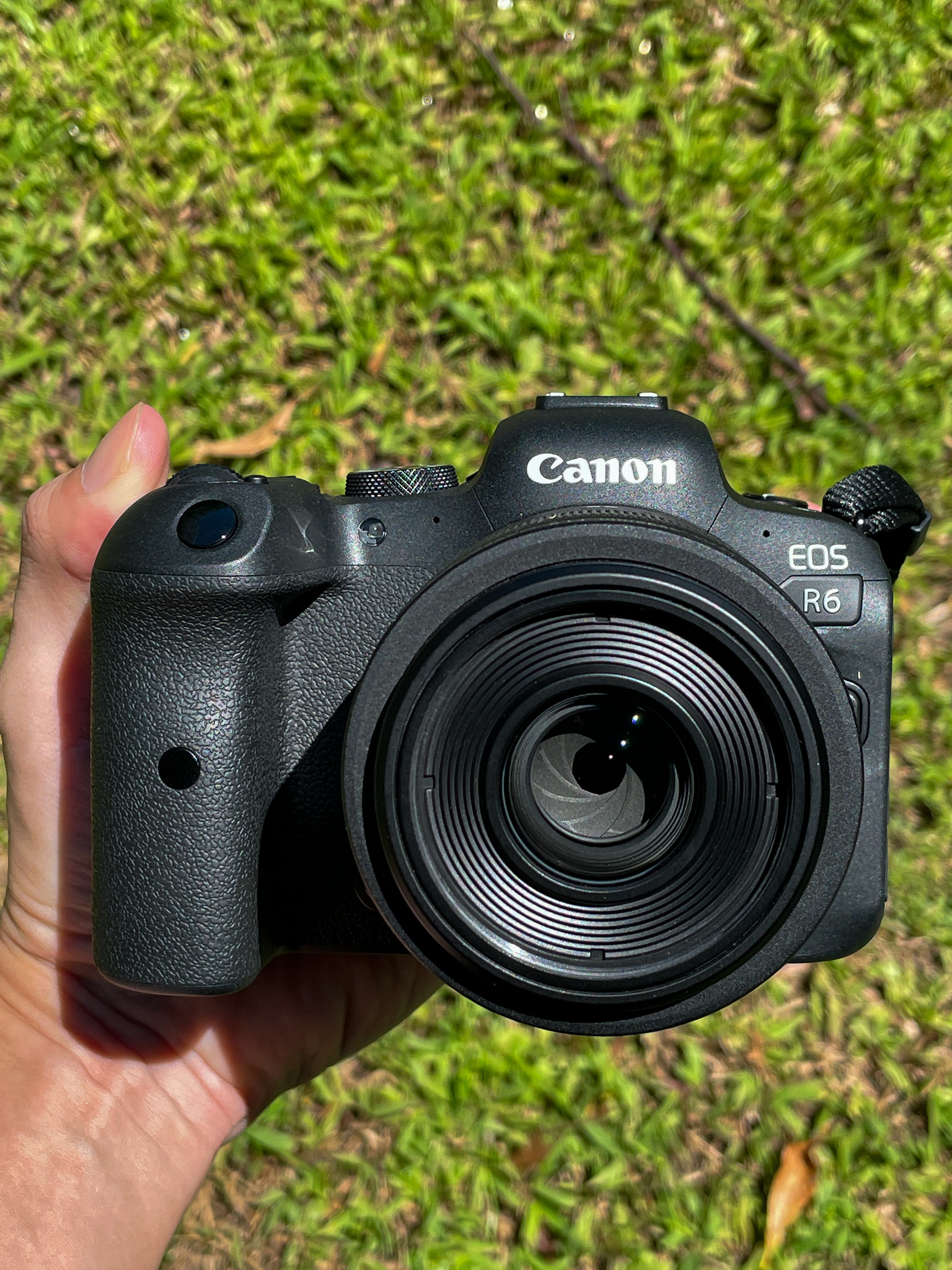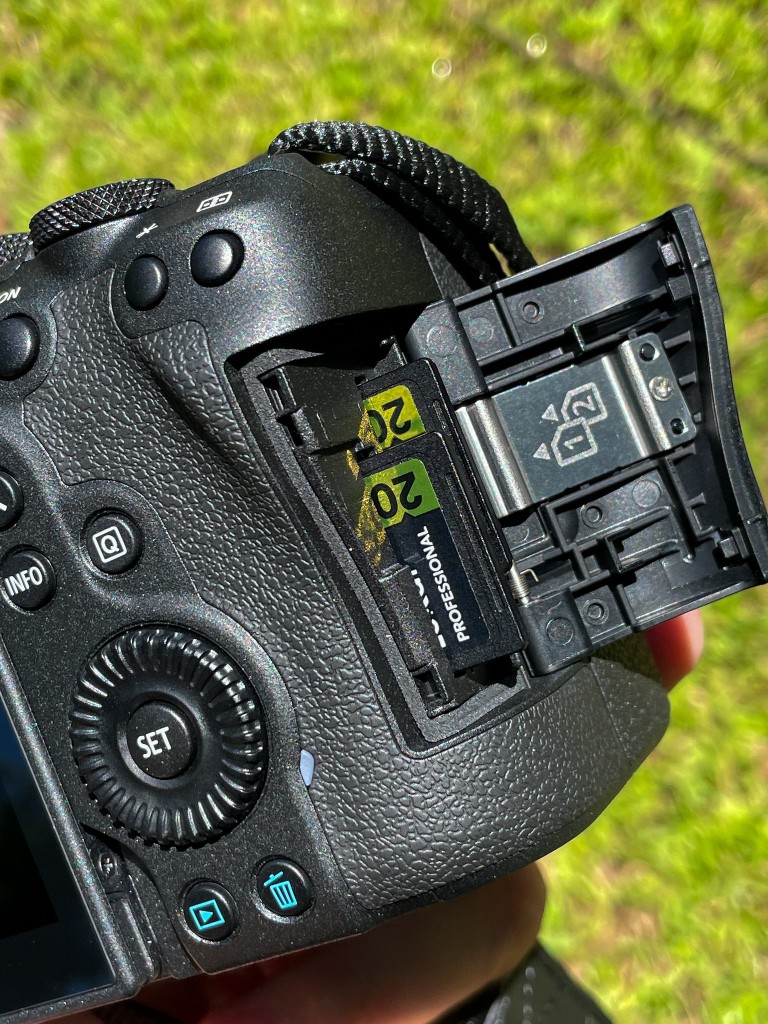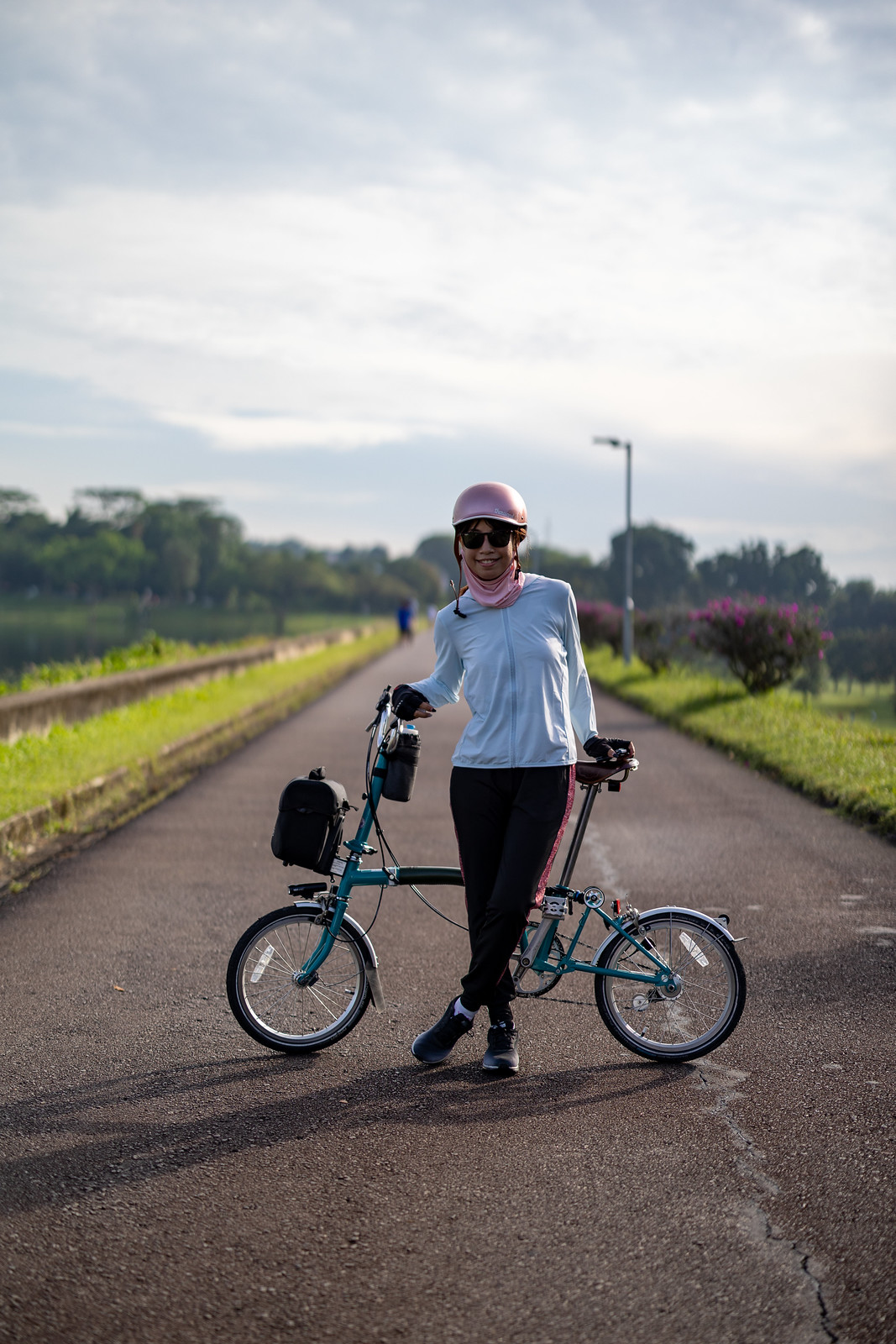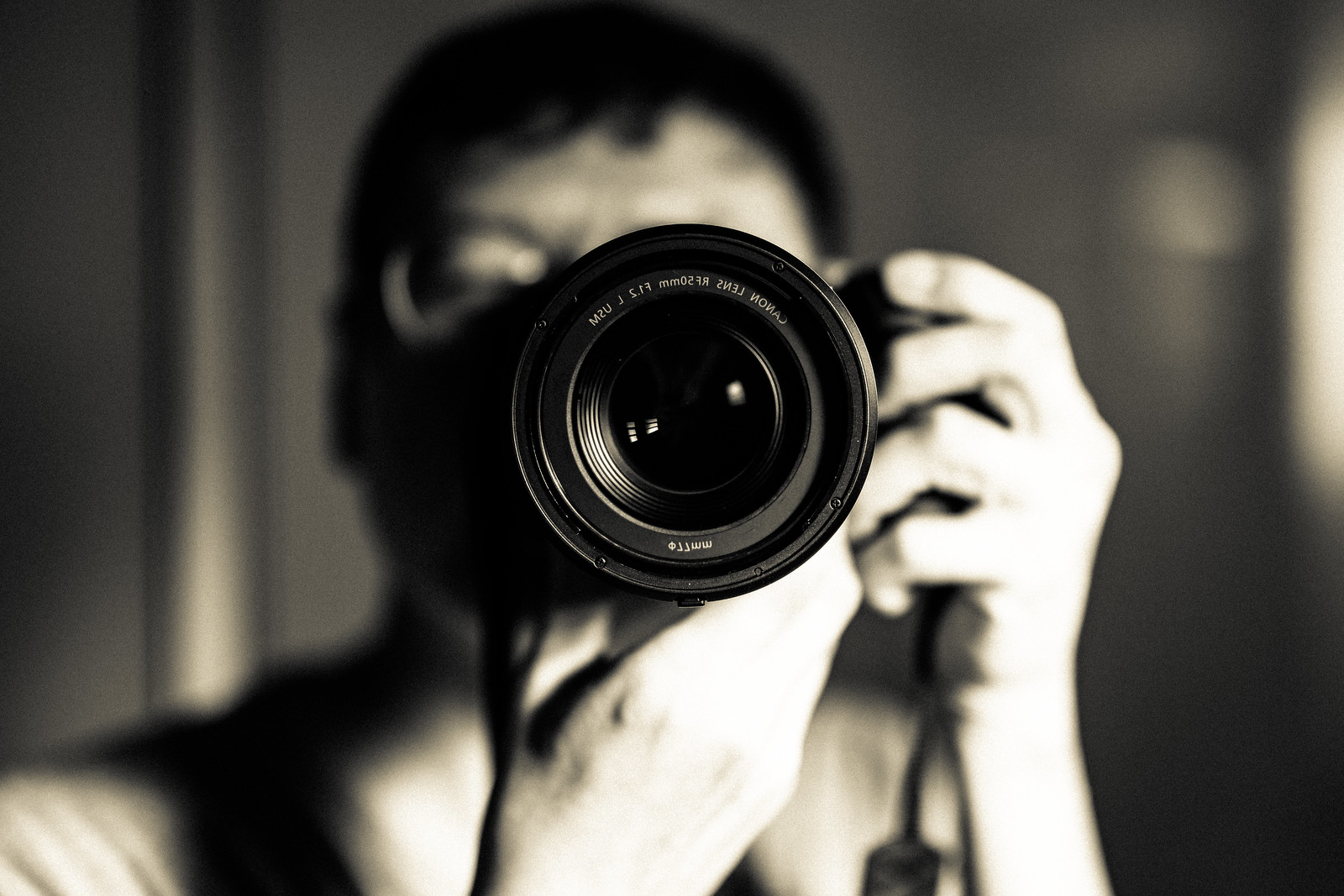This is one of the rare times I start with a disclaimer.

In this sharing, I will discuss my personal take with the Canon R6 released in July 2020 . The Canon R6 was used with the RF35mm f1.8 Macro STM (RF35 f1.8 for short) and RF50mm f1.2L (RF50 f1.2L for short) for this review.
I have not used Canon’s full frame mirrorless system (actually nor their DSLRs too) before, and my sole experience with Canon was a 3 days period with the Canon M10 a few years back that left me underwhelmed.
For brevity sake and since covered by other good review sites, I will not delve into detailed specification listing unless related to my discussions. If you are keen on the specifications, I’ve linked them on the names themselves above for your convenience.
Background – what just happened
I have mentioned a few times that Canon mirrorless and Pentax cameras are the last two brands I’ve not have an experience with. My closest to Pentax was their Ricoh GR III and I have done a two parts review on the compact.
Recently, thanks to a fellow photographer with a most handsome smile (yes, you know who you are). I was given an opportunity by Canon Singapore to test the Canon mirrorless system and I asked to loan the R6, RF35mm f1.8 Macro STM and RF50mm f1.2L.
I was not paid for this review and expected to share candidly to which I will do so.

The Canon R6 – a brief

A variable screen for versatility 
What went missing in the RP is all back in the R5 and R6 
Double UHS-II SD slots. 
Notice the sensor is protected when camera is off? Nice job Canon
Released after the Canon R and RP bodies, the R6 is geared for general use and speed for the enthusiast. Not to be mistaken though, the Canon R6 is very capable spec wise with up to 12 FPS in mechanical shutter mode and 20 FPS in electronic shutter mode with the key specifications below.
- 20MP sensor and processor similar to EOS-1D X Mark III
- In-body and in-lens stabilisation which actually stacks to give an (up to and depending on lens) impressive 8EV correction rating
- Improved Autofocus and subject tracking improved over the pro-sports model EOS-1D X Mark III
- UHD 4K at up to 60p in up to 10-bit 4:2:2 from 94% of sensor width
- Magnesium alloy build with 2 UHS-II slots
- 3.69 million dots EVF up to a refresh rate of 119.88 fps.
- (Full specifications here)
Of course there is a lot to discuss but I shall only focus on three: autofocus performance and the RF50mm f1.2L & RF35mm f1.8.
1. Autofocus performance
The R6’s autofocus uses a subject recognition system that works with machine learning. It has algorithms that can identify characteristic patterns in a scene that relate to faces, eyes and certain types of animal and as such, react accordingly. The Olympus E-M1X was one of the first few cameras to utilise this in a more effective manner.
The thing is, the R6’s autofocusing system simply works.
For the users who yearn for more control, Canon has provided eight different AF area modes, which can be selected via the Q (quick) Menu or assigned to a button. You can customise which of these options is available, to make it quicker to select them while shooting.

Only having the RF35mm f1.8 with me at that moment, the above shot was frankly done in a simply ‘click and pray’ manner and impressively, the system kicked in and did the job perfectly. Coming from other brands, I know some would have likely missed the focus.

I wanted to be sure it was not a fluke and tried again, and wasn’t disappointed. And notably was that I was new to the menu system and frankly had the camera set on simply SERVO AF and the camera was not even in Continuous AF mode.
In addition there’s a Face AF + Tracking option which, as the name suggests, focuses on faces and attempts to track a subject that moves around the frame which I used for the shots below. (1st available mode out of the 8 available in the menu) and the one I used the most.



Testing it on the lady with her scooter, I realised the instant I trained the focusing screen on her, the autofocus kicked in with a box overlaid on her face and the camera kept the tracking consistent frame-wide while she was zooming around.
I had deliberately used the shallowest depth of field, at f1.2 to test the system’s capabilities and the results are up there (come on, there’s no pride in saying it is focused because I shot it at f8 right?)
We all know there is little value in proclamations like ‘fastest auto-focus of 0.05 seconds’ in marketing material nowadays and what really matters is focusing reliability, and in this sense, the Canon R6’s autofocus capabilities really left a very positive impression on me.
2. The RF50mm f1.2L – the exemplary companion.
From the RF lenses range available, I chose the RF50mm f1.2L due to that portraits forms the majority of what I photograph and a 50mm focal length is pretty much easier to manage over a 85mm or 200mm, the RF35mm f1.8 Macro STM was planned as an everyday option which I can bring around everywhere.
The design of both lenses were not sexy but frankly, functional and robust. These are lenses you know that are designed to deliver the goods and not meant to attract you to buy for its outward appearances.
The RF50mm f1.2L comes equipped with a 10-blade diaphragm and maximum aperture of f1.2. This lens provides smooth, near circular bokeh and features an additional control ring on the barrel that could be customised to control exposure settings; shutter speed, aperture, ISO and exposure compensation, effectively providing better control while I was on the EVF.


On the heavier side as compared to the RF35mm f1.8 obviously, the RF50mm f1.2L gave exemplary imaging performance. I hardly missed a shot frankly and images were crisp and without distortion all the way to the corners shooting wide open.

Auto-focus even with face detect or eye detect was dead on accurate and I guess the days of having to do ‘fine-tune’ for these large aperture lenses are pretty much over.

Many reviews have shared about how optically well made this lens is and I tried to push it for flare and loss of details shooting against bright light and generally failed to do so. The shot above and the cover photo were the only instances where I could manage to get the lens to flare and what was unexpected was, I actually liked how the flare added to the image’s overall feeling.
Also, the RF50mm f1.2L has a very short minimum focusing distance of 0.40m , making it even more versatile.
3. The RF35mm f1.8 Macro STM: the swiss-knife option.
The RF35mm f1.8 Macro STM proved to be the swiss-knife of the bunch. Designed to be an everyday and everywhere lens, this 305 grams lens comes with bonus of magnification of 0.5x with an extremely short minimum focusing distance of 0.17m.

The large aperture of f1.8, allows good low-light capability. The image stabilisation of up to 5-stops, makes slower shutter speed and lower ISO possible for both stills and video. A 9-bladed diaphragm aperture design also ensured smooth bokeh.

In fact, though some may find a prime’s fixed focal length limiting, the 35mm focal length is my favourite due to its versatility for street and basically most genres, notably 35mm being one of the first choices for photojournalists.


The Canon R6 and RF35mm f1.8 setup was versatile, and while not going to fit into our pockets, was compact for me to bring around slung over the back on my cycling trips.





The RF35mm f1.8 was reliable and quick in performance, delivering images that were decently sharp across the frame wide open to excellent sharpness f2.8 onwards. There is some vignetting noticeably at f1.8 which fully clears up from f4 onwards. In fact the RF50mm f1.8 and RF35mm f1.8 duo in my opinion provides an excellent starting point for users new to the RF mount based on the balance they strike between price, size and performances .

Concluding words
A big mistake anyone can make is to underestimate the Canon R6 based on its very ‘typical’ looking specifications sheet. I am frankly guilty of this same mistake before I was given the opportunity to test the system. I personally feel Canon actually has the goods to flex and boast a bit more in their marketing efforts.
The few things that impressed me the most were, how significantly much Canon has improved in its mirrorless systems from the dud of a Canon M series (sorry, I have to be honest) to now the Canon R mirrorless series which is exemplary enough to bridge it across from it’s DSLR beginnings to the Mirrorless era.
Admittingly I do find the whole Canon menu system foreign to me being a newcomer to the system but over the two weeks I have realised the Canon R6 gets the most important thing about any camera system correct – which is, it just works. For example, they have managed to get their touch-screen functions working so intuitively that I did not find much need to actually enter the menu system to get my settings done right and this is something that some camera brands can learn greatly from.
There are of course other things to consider like how does the images compare with the output from Nikon, Fujifilm, Sony and on, how does the skin tones compare is another discussion in itself. (Quick answer: to be updated later)
Why did Canon only give 20MP to the R6 when the APSC Fujifilm X-T4 does 26MP is also a question asked by some users. These are points I can hope to touch on if I have the opportunity to use the setup more for more comparisons.

Without a doubt, Canon has done a remarkable job with the EOS R6. While Sony has been tweaking and fine-tuning its cameras over four generations to get to where they are today, Canon was able to deliver such impressive results in less than half the time.
The Canon EOS R6 is easy to use and it has done excellent with great ergonomics and customisation options. Its autofocus system impresses in its speed and reliability and easily matches some of the top tier options nowadays. The body image stabilisation is next generation level too, easily putting the best of Canon into the hands of the enthusiast and I am excited thinking of what can Canon achieve next with the rumoured upcoming Canon R3.

Thank you for reading.







Keith, it is indeed a surprise to see
you covering Canon too! Nicely written.
LikeLiked by 1 person
Hi! Thank you for keeping track haha and of course , the kind words.
LikeLike
Nice writeup, Keith. Will you be getting one?
LikeLike
Hi! I’m slightly invested in the Nikon Z system hence it’s a big question mark frankly. Have to see how it goes haha
LikeLike
Good informative write-up!
LikeLike
Hi, thank you for the kind words 🙂
LikeLike